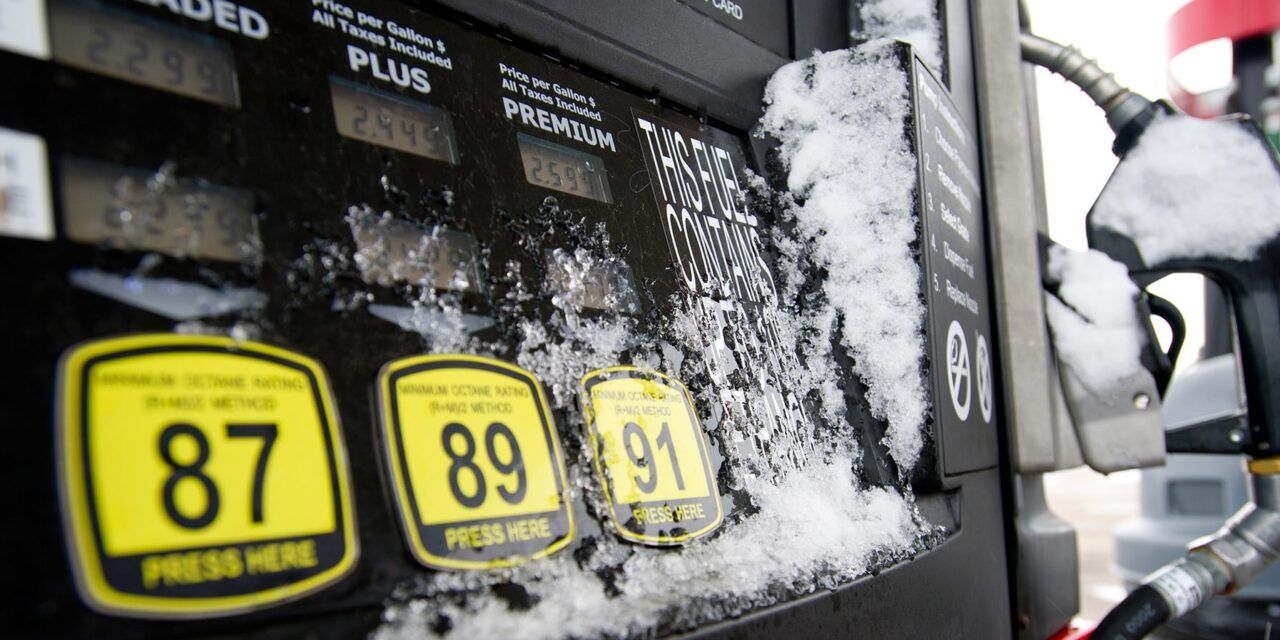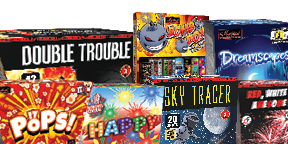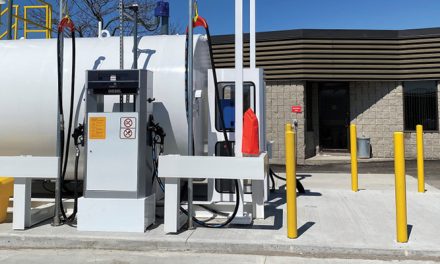
The Best Ways To Keep Hanging Hardware Functioning Through Winter

The Best Ways To Keep Hanging Hardware Functioning Through Winter
By Ed Kammerer
The next time you find yourself complaining about the cold weather and wondering when winter will finally end, you can take some solace from this thought: At least you’re not an O-ring, seal or gasket in one of the pieces of hanging hardware – nozzle, swivel or breakaway – at a fueling island. These components may be small, but they have an outsized responsibility when it comes to preventing nozzle, swivel and breakaway leaks and failures.
The problem is that during the winter months – when temperatures can dip as low as -40ºC or colder in some parts of Canada – their ability to perform as expected is compromised. O-rings, seals and gaskets work because they are constructed of materials that try to retain their shape. Therefore, when they are squeezed tightly between two parts, they fill the gaps and imperfections between those parts that would otherwise allow liquids to escape. However, when components that are designed to work in typical temperatures are used in extremely cold conditions they lose their pliability and aren’t able to fill the gaps and surface imperfections as easily, which can lead to the formation of leak paths in the nozzle, swivel or breakaway.
Knowing how critical it is to keep motor fuels from leaking and equipment properly shutting off when they are being dispensed, the manufacturers of hanging hardware have taken great pains to develop O-rings, seals and gaskets that are made of specialized elastomers that are able to maintain their physical properties even at extremely low temperatures. It would be true that these specialized parts can cost more than standard models, but there really isn’t an option if you want the nozzle, swivel or breakaway to keep working, knowing that the cost of a failure-induced fuel leak or, in the worst-case scenario, fire or explosion will be much more costly and damaging in the long run.
Let’s take a look at the specific pieces of hanging hardware and what conscientious manufacturers have done to help ensure their continued reliable operation in extreme weather conditions:
Nozzles
Nozzle manufacturers have developed what are known as extreme cold versions of their products. Keep in mind that the UL Canada (ULC) requirement for listing is only down to -40ºC. But we all know Canadian winters can drop below that threshold. These nozzles are designed beyond the ULC standard for use with winter fuel formulations and in temperatures as low as -54ºC. They are designed to prevent leaks, premature nozzle shutoff and, conversely, failure to completely shut off. They also maintain the operational benefits that denote a reliable, durable and versatile nozzle, including compatibility with gasoline, diesel and 10 per cent ethanol blends with no fuel flow allowed until the system is properly pressurized. Many of these nozzles with extreme-cold seals have been factory tested for more than one million cycles (again, well past the ULC cycle-test minimum of 100,000.)
Fuel-site operators can also help ensure that their nozzles will last through the winter by paying attention to the nozzle’s remove-by date. Generally, nozzles will operate safely for five years before needing to be replaced, with the remove-by date serving as a guide. Therefore, if your nozzle is in need of replacing and you know the harsh realities of winter are beginning to settle in, you may want to be proactive and replace the nozzle with an Extreme Cold model.
Swivels
Like nozzles, swivels are under constant assault from the elements. Also like nozzles, swivels are in constant motion during the fueling process and cold conditions can affect how they move, which can decrease their ability to perform properly. This challenge has been overcome through the creation of a swivel design that features two 360-degree planes of rotation and a straight, unobstructed flow path. These next-generation swivels can be outfitted with the special extreme-temperature O-rings and seals for added protection when used in cold-weather locations. Again, look for swivels from manufactures who design specific models to withstand below the ULC standard of -40°C.
Breakaways
Since breakaways are static pieces of equipment, they are not as susceptible to the harmful effects of cold-weather operation, but they still must reliably work in any type of weather. A recent advancement in breakaway design and operation is the reconnectable model. In the event that the breakaway should disconnect, such as during a drive-off incident, it can be easily reconnected through push-twist-click technology: simply realign the valve, push in and twist until you hear the audible click. This simplifies the reconnection process, which means less time spent in the cold by the operator, while also increasing safety since fuel flow is stopped automatically when the breakaway separates. Breakaways can also be manufactured with seals that can withstand -54°C temperatures.
Conclusion
You don’t have to be a Game of Thrones fan to know “Winter Is Coming!” And while we may not have to worry about the Night King conquering the living, we do need to worry about winter with its inevitable plummeting temperatures and bitter winds. These elements are here and the non-stop assault on the fueling site’s hanging hardware has begun. Site operators can help ensure that their hanging-hardware systems will survive until spring by upgrading their nozzles, swivels and breakaways to models that feature O-rings, seals and gaskets that have been tested and are compatible for use in extreme-cold temperatures beyond the ULC minimum threshold. The upfront cost may be a bit more, but the peace of mind that is gained with the knowledge that there is a reduced risk of catastrophic breakdowns – and their resulting costs in downtime, service calls and part replacement – is priceless.
Ed Kammerer is the director of Global Product Management for OPW, based in Cincinnati, OH, USA. He can be reached at ed.kammerer@opwglobal.com For more information on OPW, please go to OPWGlobal.com.


































